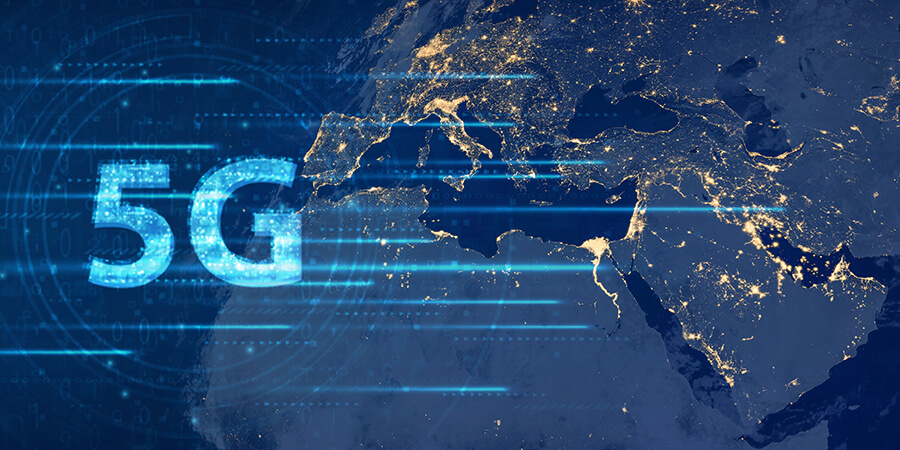As the adoption of 5G continues to soar, the necessity for indoor 5G performance becomes increasingly apparent, serving as a pivotal asset for end users and a commercially advantageous asset for service providers.
In the Gulf region, operators are working towards bridging the indoor-outdoor coverage disparity. Insights from Ookla’s Cell Analytics™ data have shed light on the provision of indoor 5G coverage by seven mobile operators across 28 malls situated in Qatar (Doha), Saudi Arabia (Jeddah and Riyadh), and the UAE (Abu Dhabi and Dubai), derived from crowdsourced measurements spanning from December 2022 to November 2023.
In essence, du has emerged as the frontrunner in the UAE, particularly in Abu Dhabi, while Mobily has gained prominence in Saudi Arabia, boasting superior indoor 5G coverage across a greater number of malls, and Ooredoo has taken the lead in Qatar malls’ indoor coverage provision.
Also Read: 5G: A Key Driver for Roaming Revenue Growth, Customer Retention in GCC
Indoor Coverage Improvement
Since 5G drives the majority of data usage and most of it occurs indoors, focusing on improving indoor coverage and capacity is crucial. Ericsson reports that people spend 90% of their time indoors, with up to 80% of data consumption happening in indoor settings. Therefore, by improving indoor coverage and capacity, operators can capitalize on data growth, decrease churn, and accommodate new consumer and business use cases.
Importance of Indoor 5G Coverage in Malls
In the Gulf region, indoor network coverage holds paramount importance due to the prevalent high temperatures and extended indoor stays, particularly in shopping centers, which serve as the hub of economic and social activity for residents and tourists.
5G connectivity within these malls is indispensable for both consumers and businesses. It facilitates various operations such as connecting video cameras, point-of-sale (PoS) devices, and signage systems for stores, enabling a hybrid retail experience that merges physical and digital sales channels. Moreover, robust indoor 5G coverage supports future in-mall experiences integrating technologies like AR/VR, enhancing customer engagement.
Offering seamless connectivity in malls benefits operators and venue owners alike. Operators can enhance their brand image by associating with iconic venues, while landlords can differentiate their malls and potentially command higher rental rates by ensuring exceptional indoor coverage and quality.
UAE Malls Have Better Indoor 5G Coverage Than Qatar and Saudi
Ookla utilized the Reference Signal Received Power (RSRP) model to gauge the network’s coverage, which indicates the strength of the signal received by a mobile phone. A RSRP above -90 dBm signifies excellent coverage, while -90 dBm to -100 dBm indicates good coverage. Lower RSRP values correlate with slower download speeds and a higher likelihood of network disconnection.
UAE
Overall, top UAE malls boast superior indoor 5G coverage compared to those in Qatar and Saudi Arabia. In 9 out of 18 locations analyzed, the weighted average RSRP per mall stands at a minimum of -86 dBm, indicating excellent indoor coverage. In Abu Dhabi, du consistently outperforms etisalat by e& in indoor 5G coverage across all six malls. For instance, du demonstrates a 10% superiority over etisalat by e& in the Khalidiya Mall and an 8% advantage in the Marina Mall.
However, in certain locations such as the Ibn Battuta Mall and the Mall of Emirates (for both operators); the Wafi Mall and the Yas Mall (for etisalat by e&); and the Dubai Mall (for du), the signal power equals or falls below -90 dBm.
Also Read: The UAE First to Significantly Increase Indoor Wireless Network Speeds
Saudi Arabia
Among the 28 malls examined by Ookla, Saudi Arabia hosts the five malls with the poorest indoor 5G coverage. RSRP weighted averages range from -98.8 dBm in the Al Salam Mall in Jeddah to -93.8 dBm in the Riyadh Gallery Mall in Riyadh. Other malls with subpar coverage include the Mall of Arabia and the Red Sea Mall in Jeddah, and the Al Nakheel Mall in Riyadh.
The RSRP discrepancy among the three operators (Mobily, stc, and Zain KSA) in other malls ranges from 3.3 dBm to 4.6 dBm, indicating that the choice of operator can impact signal reception in these venues.
Qatar
In four Doha malls, Ooredoo provided superior indoor coverage across all except the Villaggio Mall, where Vodafone performed better. The largest difference in RSRP occurred in the City Center Doha Mall, where Ooredoo led Vodafone by 9.2 dBm. In the Mall of Qatar, the signal strength gap between the two operators was 4.4 dBm, but both offered excellent coverage simultaneously, with RSRP readings of -81.4 and -85.8 for Ooredoo and Vodafone, respectively— which do not significantly impact coverage for users.
